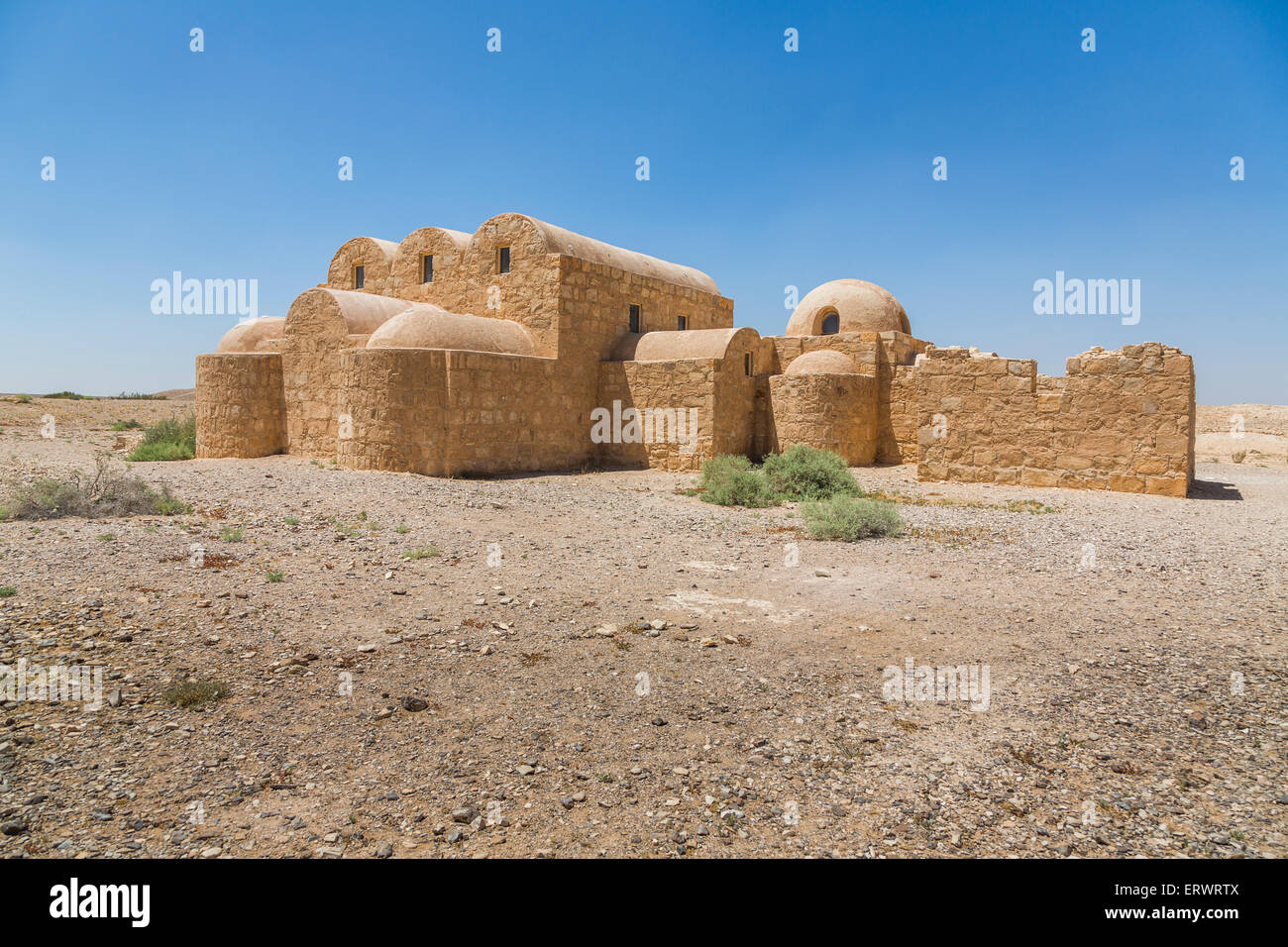El Quseir Amra oder Qusayr Amra, Jordanien

Bilddetails
Bildanbieter:
B.O'Kane / Alamy Stock FotoBild-ID:
ERWRTXDateigröße:
63,3 MB (4,4 MB Komprimierter Download)Freigaben (Releases):
Model - nein | Eigentum - neinBenötige ich eine Freigabe?Format:
5760 x 3840 px | 48,8 x 32,5 cm | 19,2 x 12,8 inches | 300dpiAufnahmedatum:
2. Juni 2015Ort:
eastern JordanWeitere Informationen:
Qasr Amra, often Quseir Amra or Qusayr Amra, is the best-known of the desert castles located in present-day eastern Jordan, although it is more a pleasure bath house than a fortification. It was built early in the 8th century, sometime between 723 and 743, by Walid Ibn Yazid, the future Umayyad caliph Walid II, whose dominance of the region was rising at the time. It is considered one of the most important examples of early Islamic art and architecture. The discovery of an inscription during work in 2012 has allowed for more accurate dating of the structure. It is most notable for the frescoes that remain on the ceilings inside, which depict hunting, naked women and, above one bath chamber, an accurate representation of the zodiac. These have led to its designation as a UNESCO World Heritage Site, one of four in the country. Qusayr Amra is most notable for the frescoes on the inside walls. The main entry vault has scenes of hunting, fruit and wine consumption, and naked women. Some of the animals shown are not abundant in the region but were more commonly found in Persia, suggesting some influence from that area. One surface depicts the construction of the building. Near the base of one wall a haloed king is shown on a throne. An adjoining section, now in Berlin's Pergamon Museum, shows attendants as well as a boat in waters abundant with fish and fowl. An image known as the "six kings" depicts the caliph with the rulers of neighbouring powers—the Byzantine Emperor, the Visigothic king Roderic, the Sassanid Persian Shah, the Negus of Ethiopia and two others who are unidentified, possibly a Khazar or Turkic khagan and an Indian raja. Its intent was unclear until conservators in the late 1970s discovered the Greek word "NHKH", or nike, meaning victory, nearby. It was concluded that the "six kings" image was meant to suggest the caliph's supremacy over his enemies.
Verwendung im Zusammenhang mit Nachrichten berichterstattung, Rezensionen und Kritik sowie der Übermittlung von Informationen über Personen, Orte, Dinge, Ereignisse oder Geschehnisse.
Zur Klarstellung: Die redaktionelle Nutzung umfasst keine Nutzung im Zusammenhang mit Werbung, Verkaufsförderung (z. B. verkaufsfördernde Webseiten), Marketing, Verpackung oder Merchandising.